#common hepatica
Text

Hepatica/liverwort/blåsippa. Värmland, Sweden (March 28, 2022).
374 notes
·
View notes
Text

Ohio Spring Wildflower Field Guide
#hepatica#Anemone hepatica#Hepatica nobilis#common hepatica#liverwort#kidneywort#pennywort#flower#flowers#spring flowers#spring#floral#wildflowers#wild flowers#ohio#ohio wild flowers#botany#march#april
3 notes
·
View notes
Photo
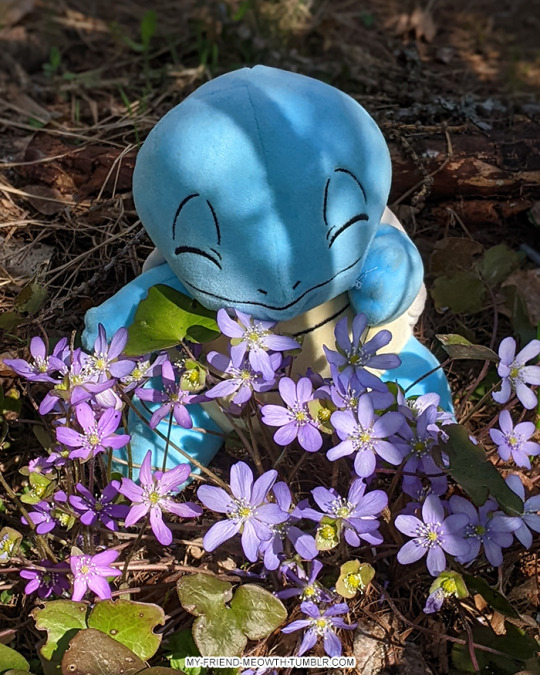

Squirtle with blue flowers (common hepatica (Hepatica nobilis) & siberian squill (Scilla siberica)
13 notes
·
View notes
Text

#Anemone nemorosa#the wood anemone#wood anemone#anemone#hepatica nobilis#anemone hepatica#hepatica#common hepatica#flowers#purple flowers#white flowers#spring flowers#plant photography#plantblr#plantlife#plantphotography#plant flowers#plant lover#spring#beautiful#beautiful photos#my photo#photography#photooftheday#naturecore#photoart#forest#woods#forest view#fairycore
5 notes
·
View notes
Photo

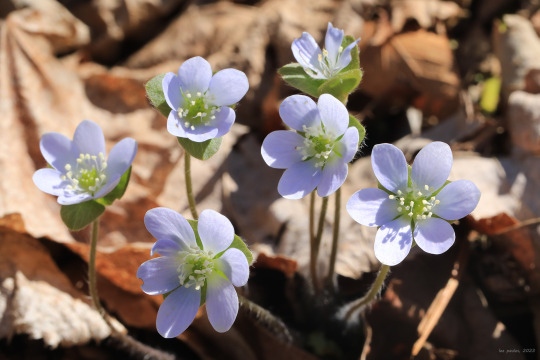

Round-lobed hepatica (Hepatica Anemone americana), one of the earliest-blooming and most beautiful of Central Appalachia’s spring wildflowers, blooms so quickly in late March to early April the flowers are gone before most people notice them. But the plant’s leathery, thrice-lobed leaves persist throughout the year, even through winter. The leaves reminded early mountain folk of the human liver- thus its other common name, liverleaf. Another species - sharp-lobed hepatica (Hepatica Anemone acutiloba) - also occurs locally. You can search from the main blog page for prior posts of both species.
#appalachia#vandalia#west virginia#early april#spring#wildflowers#coopers rock state forest#anemone americana#round-lobed hepatica#blunt-lobed hepatica
237 notes
·
View notes
Text
I have so many things I need to catch up on and respond to (I have severely neglected my email which is NOT good) so I apologize. I will get around to it this week I hope!
Old followers will know that this is the norm for me this time of year as I once again rally the strength to try and make the most of my severely neglected little urban hellscape of a yard. I mean, how do you recover from the knowledge that ALL of the native milkweed species you planted over the last 4 years has died, never to return? (I can’t stop being sad about this you have no clue, I had 5+ species native to the state!) All that remains is the common milkweed volunteers that have come up wherever they feel like it, and I’m obligated to let them do as they wish. Feels bad, man. I would have killed to see that purple milkweed flower.
Have spent the last 2+ weeks getting my veggie garden and containers up and running (still need to sow beans and more kale) and I’ve got more natives/ornamentals to go into my nearly cleared side yard. I’m really really REALLY hoping my new virginia bluebells don’t die with this heat/likely drought, but I’m pretty confident everyone else will come through okay. I mean, if the cardinal flower can come back for the 3rd year like a champ, what’s their excuse? (Dear self: be thankful, the cardinal flower likes you and you know it shouldn’t and that’s rad. Also the prairie smoke plant is starting to spread and that’s really cool. So is the hepatica. And your ferns are getting big and beautiful! So remember what’s working out, ok?)
I just want my little plot to be the hopping hot spot for all the local wildlife. It’s nice to see so many critters anywhere I look but I know I can do better and that requires A LOT of work. I’ll never be anything akin to a master gardener, but I like to think I’m learning a lot every day and working WITH nature instead of against it. Battling invasives is one hell of task. (Rot in hell, creeping bellflower!)
Now if only it would rain, and I can find a way to get a rain barrel setup! (No gutters in my back yard to access for rain is a major L...)
#April rambles#gardening season!!!!#urban gardening#native gardening#attempting a kinda sorta woodland planting on the shaded half of the side yard#got my lady ferns and my maidenhair ferns ready#doing my best to keep my native plants as the majority for the yard but I do splurge on some ornamentals#who can resist peonies am i right?#can't wait for the lupines to take off I need to start expanding the native ones!#when in doubt there are always asters#my columbine got defoliated by sawflies and I'm SAD#it's still alive though but I'm babying it#having a WEED fail to return for you is a major blow to the would-be ego#i hope to fuck my new liatris comes in strong because YES!!!!!#so many tall plants that fall over it's pure chaos#looking at you 5+ feet tall joe pye weed and 6+ foot tall goldenrod#absolute beasts!
61 notes
·
View notes
Text

8 notes
·
View notes
Text
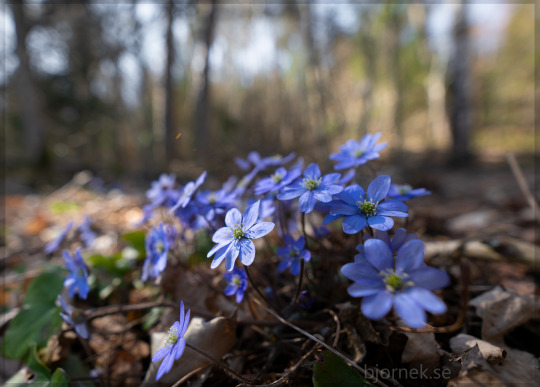
The Swedish nature has woken up. Anemone Hepatica or Common Hepatica . Swedish: Blåsippa
Ultra-wide angle photo.
#myphotography#original photography on tumblr#Flowers#flowerphotography#Sweden#naturelover#NaturePhotography#naturelovers#spring
4 notes
·
View notes
Text




April 16
A walk in the woods and a wonderful variety of native spring ephemeral wildflowers.
Top left - trout lily. Its common name is because people thought the spotted leaves look like trout skin. Turns out the woods around my new home are absolutely lousy with them, which is delightful.
Top right - bloodroot. Named for its reddish rhizomes, although it's also got reddish sap. I went walking on a cloudy day so all the flowers I saw were closed, but they open up in the sunshine. I love how the leaves of this plant often curl around the flower stem like a cloak.
Bottom left - hepatica. Different varieties of hepatica grow in North America, Europe, and Asia. In historical times, people apparently thought hepatica could be used to treat liver ailments thanks to an idea kicking around since ancient Greece called the "doctrine of signatures." They thought that plants resembling parts of the body can be used to treat that body part. Idk who thought livers had three lobes like these leaves, but no, hepatica is not actually useful for liver problems, and in general, the doctrine of signatures does not hold up as science. (Because of course it doesn't.)
Bottom right - trillium! Always a personal favorite, and now special to me in a new way since it's the provincial flower of my new home. There are many species of trillium, but the bunch I found today were all trillium grandiflorom, the most common kind in my area. They have big, beautiful white flowers. Fun fact about trillium is that while the plants may look like they have three "leaves" it actually has no aboveground leaves. The green bits are called "bracts" which function more like a part of a flower than foilage.
#flower explorer 2023#wildflowers#i took a comical number of pics today and got caught in a downpour on the trail - it was delightful#warm raining outside now and i feel so cozy and good
4 notes
·
View notes
Text
The myth of the “wild-type” or “straight species”
Guest Rant by Joseph Tychonievich
There has been a lot of discussion in gardening circles about “nativars.” Is the term useful? How is it defined? The latest surge of comment coming from this generally excellent article in the Washington Post.
But there is a concept that gets thrown around in all these discussions that makes me want to scream: That is the idea of a “wild type” or “straight species.” This is generally put forward in contrast to cultivars, the idea being that they are the species as it is in the wild, untouched by human hands.
Here’s the problem.
There is no such thing as a singular wild type or straight species. Wild plants – and all other organisms – do not exist in a single form, they are genetically diverse and variable populations, each individual different. So every single plant you purchase or grow, whether it has a cultivar name attached to it or not, is a selected form. Maybe it was selected because a nursery owner thought it had unusually beautiful or interesting flowers. Or maybe it was selected just because it happened to grow in a meadow where a plant propagator got permission to collect seeds one sunny late summer day.
If you think this is all academic nitpicking, let’s give a concrete example.
Here is a photo of one of my favorite native plants, Hepatica americana. I adore this plant and seek it out everywhere I can every spring. Which one is the wild type? White? Light blue? Dark blue? I can tell you that all these color forms are very common. Sometimes I’ll visit one park and find a population of nearly all blues, then drive just 20 minutes up the road to another woodland and find population that is entirely white, and other times all growing mixed up together like this. Less often, I’ll find pinks, but they’re not that rare; I pretty consistently find a pink or two every large population I’ve seen. Which form will you get if you purchase “wild type” or “straight species” Hepatica americana? Who knows. You will get some selection from natural diversity with no cultivar name attached; you just don’t get any information about what the selection is.
‘Jeana’ phlox at Mt. Cuba Center
This reality plays out in very weird ways. Every thoughtful article I’ve read about nativars cites Mt. Cuba Center’s excellent research on how attractive different varieties are to pollinators and specifically mentions the cultivar Phlox paniculata ‘Jeana’. Here’s how the Washington Post article describes it: “Another surprise nativar standout was Phlox paniculata ‘Jeana’, which outperformed the species “by a huge margin,” Hoadley says.”
Let’s unpack that. By “the species” they mean a Phlox paniculata selection from the wild with no cultivar name attached. In contrast to ‘Jeana’ which is… wait for it… ALSO a selection of Phlox paniculata from the wild. And, because ‘Jeana’ does have a name, it is easy to google and find out that it was first collected by a woman named Jeana Prewitt, who found it growing along the Harpeth River in Nashville, Tennessee.
In other words, the comparison here is not between a wild plant and man-made hybrid; it is between two selections from the wild, one of which we have some information about because it was given a name, and the other about which we know nothing because no one bothered to name it.
Now, of course, not all cultivars are wild selections. Some are complex hybrids, significantly modified by years of active work by plant breeders. But it is easy to differentiate between a selection from the wild, like Phlox ‘Jeana’, and a man-made hybrid, like Phlox ‘Fashionably Early Flamingo’, because they have names attached. Names we can look up to get more information about how they were created. Names that let places like Mt. Cuba compare them and give us all useful information about how many pollinators they attract.
Keeping cultivar names attached to plants isn’t just useful for helping pollinators. Sometimes it is key information about how a plant will – or won’t – perform in your garden. My beloved Hepatica americana has wild populations around me in northern Indiana, and the range extends from the Florida panhandle and all the way up into Ontario. That means most gardeners in the eastern half of North America can grow this wonderful little wildflower, but if the nursery just lists it as “the straight species” who knows what you’ll get. It could be a selection from your part of the country, or it could be one from a far extreme of the range that is going to suffer horribly in your conditions.
So we need more “nativars” in the world. More names. More background on how and where and why a plant was selected. And we need to stop pretending that a plant without a cultivar name attached is anything other than a plant about which we don’t have very much information.
‘Jeana’ photo source.
Joseph Tychonievich is the author of “The Comic Book Guide to Growing Food” and several other gardening books. He lives and gardens in northern Indiana.
The myth of the “wild-type” or “straight species” originally appeared on GardenRant on March 2, 2024.
The post The myth of the “wild-type” or “straight species” appeared first on GardenRant.
Read More
0 notes
Text
Here's a fungi for the day:
beefsteak mushroom or (Fistulina hepatica)

this fungi the beefsteak mushroom, is edible and is a unique poly-pore one too boot, given that it does NOT share any other similarities that could be mistaken for something dangerous to consume! its a bracket-type fungus appears around august to late November, with them growing around oak and chestnut trees. as it name implies the poly-pore looks similar to that of Meat, with it flesh being red with white 'veins' very much resembling raw meat it also Exudes a blood like liquid in drops like fresh meat would too. the shape of it resembles that to tongue to liver in a semi-circular bracket with a inflated edge when its young but flattening overtime with age. it has spore prints that are Pink/pale Ochre and Ovate. its taste is acidic and or sour but it needs to take lot more cook. however its well worth the trouble. these are found most common in Galar, but also can be in Kalos, Paldea, Unova (however you will have more luck searching in the Northern western areas of Unova near the mountains),even in the [poke Africa and Australasia] regions!
0 notes
Photo

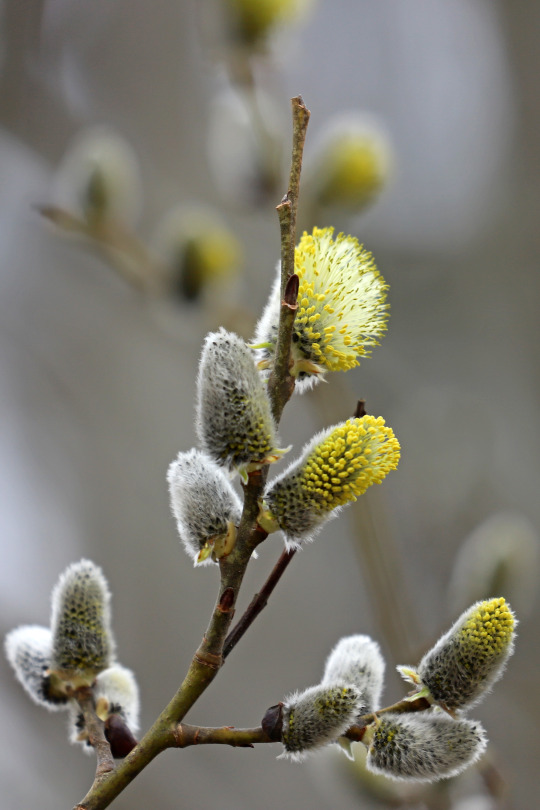



Spring. Värmland, Sweden (April 7, 2019).
664 notes
·
View notes
Text

Spring ephemeral flowers from along the river while I was walking today. They only bloom for a brief while in the spring and i look forward to them every year. These are common hepatica, aka: liverwort, kidneywort, or pennywort.
The peepers were going to town, singing away in the vernal pools left by last week's rain.
1 note
·
View note
Photo

Flower boy
17 notes
·
View notes
Text
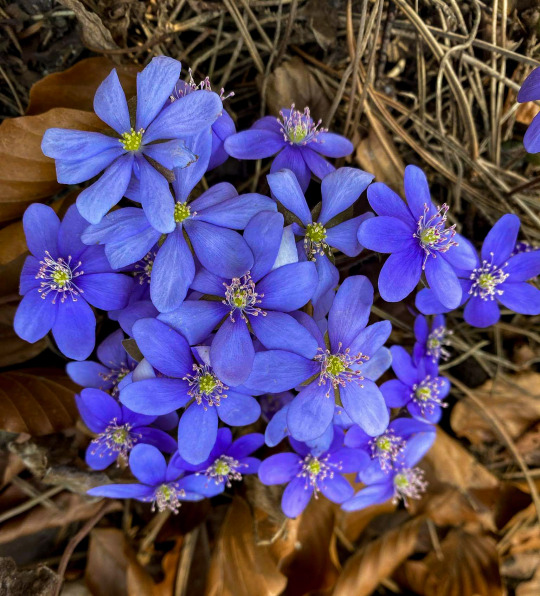

#Anemone hepatica#common hepatica#liverwort#kidneywort#pennywort#plantblr#plantcore#plant#plantphotography#flower photography#flower#flowers#purple flowers#spring#spring flowers#beautiful#beautiful photos#my photo#photography#photooftheday#photoart#naturecore#forest#woods#nature photography#nature photo art#nature photoshoot#goblincore#goblin aesthetic#fairycore
70 notes
·
View notes
